-
 Bitcoin
Bitcoin $108,489.6704
1.13% -
 Ethereum
Ethereum $2,502.0528
2.92% -
 Tether USDt
Tether USDt $1.0002
0.00% -
 XRP
XRP $2.1941
0.51% -
 BNB
BNB $655.3375
1.00% -
 Solana
Solana $151.5977
1.27% -
 USDC
USDC $0.9999
0.00% -
 TRON
TRON $0.2768
0.32% -
 Dogecoin
Dogecoin $0.1676
2.86% -
 Cardano
Cardano $0.5675
0.98% -
 Hyperliquid
Hyperliquid $40.6109
7.48% -
 Bitcoin Cash
Bitcoin Cash $500.7746
2.09% -
 Sui
Sui $2.8328
2.03% -
 Chainlink
Chainlink $13.4452
1.26% -
 UNUS SED LEO
UNUS SED LEO $9.1623
0.39% -
 Avalanche
Avalanche $18.2267
2.24% -
 Stellar
Stellar $0.2382
0.00% -
 Toncoin
Toncoin $2.8885
1.68% -
 Shiba Inu
Shiba Inu $0.0...01159
0.91% -
 Litecoin
Litecoin $87.1827
0.88% -
 Hedera
Hedera $0.1511
2.90% -
 Monero
Monero $315.4992
-0.59% -
 Polkadot
Polkadot $3.4663
2.34% -
 Bitget Token
Bitget Token $4.6118
-0.65% -
 Dai
Dai $1.0000
-0.01% -
 Ethena USDe
Ethena USDe $1.0003
0.02% -
 Uniswap
Uniswap $7.2989
4.69% -
 Pepe
Pepe $0.0...01003
5.73% -
 Aave
Aave $275.5616
7.15% -
 Pi
Pi $0.5181
-2.49%
Is the wash-out of the continuous shrinking small negative lines over?
A wash-out in crypto markets is a sharp decline that forces weak hands to sell, often marked by small negative candles, but can precede strong rebounds if fundamentals hold.
Jun 30, 2025 at 12:21 pm
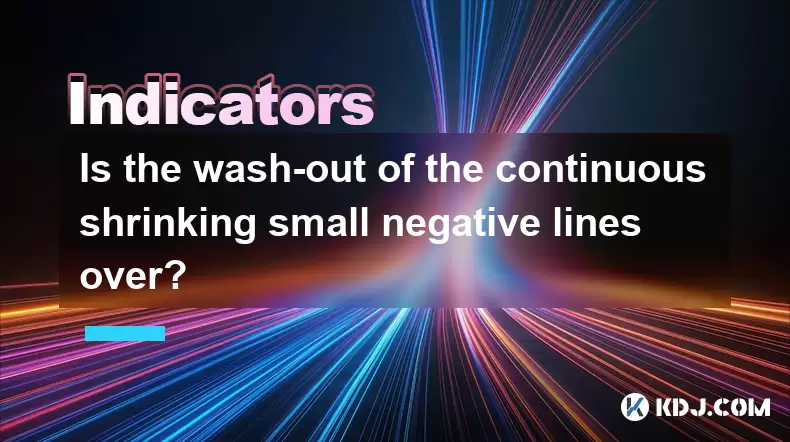
Understanding the Concept of Wash-Out in Cryptocurrency Markets
In cryptocurrency trading, a wash-out refers to a sharp price decline that forces weak-handed traders and investors to liquidate their positions. This often happens when a series of small negative candlesticks appear on the chart, indicating bearish sentiment without a significant breakout. During such phases, market psychology shifts, as holders begin to question whether the trend will reverse or continue downward.
A wash-out is typically followed by a rebound, especially if the fundamentals of the asset remain strong. Traders look for signs like volume spikes, bullish engulfing patterns, or oversold conditions on technical indicators to determine whether the wash-out phase has ended. It’s important to distinguish between a temporary pullback and a long-term downtrend, which requires careful analysis of both on-chain data and broader market sentiment.
What Does a Series of Small Negative Candles Indicate?
When you observe a sequence of small negative candles over multiple timeframes—such as 1-hour, 4-hour, or daily charts—it suggests a slow but steady selling pressure. These candles are usually characterized by small bodies and relatively low volatility compared to previous movements. They may not trigger large stop-losses but can erode confidence among retail traders who entered at higher levels.
This type of pattern often appears during consolidation phases or before major news events. In many cases, it's used by institutional players to shake out weak hands, creating artificial weakness before a potential rally. Identifying whether this pattern is part of a larger accumulation or distribution phase is key to understanding its implications.
How to Determine If the Wash-Out Has Concluded
To assess whether the wash-out phase has ended, traders monitor several key indicators and chart patterns:
- Look for a bullish reversal candlestick (like a hammer, inverted hammer, or engulfing pattern) following the string of small red candles.
- Check if the volume increases significantly during the reversal candle, which may signal strong buying interest.
- Observe whether the price breaks above a key moving average (e.g., 50-period or 200-period EMA).
- Monitor on-chain metrics such as exchange inflows/outflows, number of active addresses, and whale movement, which can confirm whether accumulation is taking place.
If these signals align, it may indicate that the wash-out has run its course and that buyers are stepping in to take control.
Practical Steps to Confirm a Reversal After a Wash-Out
For traders looking to enter a position after a suspected wash-out, the following steps can help confirm a reversal and avoid false signals:
- Identify key support levels: Use horizontal supports, Fibonacci retracements, or trendlines to pinpoint areas where price might find buying interest.
- Watch for rejection candles: A candle that closes above a recent swing high or forms a pin bar near support could suggest a shift in momentum.
- Use multiple timeframes: Analyze the daily chart for overall trend direction and zoom into lower timeframes like 4-hour or 1-hour for entry confirmation.
- Check RSI or MACD indicators: An RSI crossing above 30 or a MACD line turning positive from below the signal line can serve as additional confluence.
- Set tight stop losses: Since reversals can fail, placing a stop just below the recent swing low helps manage risk effectively.
These steps provide a structured approach to confirming whether the bearish phase has concluded and whether a new uptrend is beginning.
Real-Time Examples of Wash-Outs in Crypto History
Historically, Bitcoin and Ethereum have experienced multiple wash-out phases before entering strong bull runs. For example:
- In early 2020, BTC saw a prolonged period of small red candles during the March crash, followed by a sharp bounce once institutional buyers began accumulating.
- ETH went through a similar phase in late 2022, with weeks of sideways-to-down movement before breaking out in Q1 2023 amid positive macroeconomic developments.
These examples show that a prolonged period of small negative candles doesn't necessarily mean the downtrend is permanent. Often, it's a sign of capitulation or consolidation before a larger move begins.
Frequently Asked Questions (FAQ)
Q: Can a wash-out occur within an uptrend?
Yes, even in an uptrend, short-term corrections can manifest as a wash-out, especially after rapid rallies. These pullbacks help reset overbought conditions and allow for healthier price action.
Q: How long does a typical wash-out phase last?
There’s no fixed duration; it can range from a few days to several weeks depending on market structure, investor sentiment, and external factors like regulatory news or macroeconomic shifts.
Q: What tools can help identify a wash-out more accurately?
Traders often use tools like Volume Profile, On-Balance Volume (OBV), and Depth Charts alongside traditional candlestick analysis to better understand the strength of a wash-out and potential reversal.
Q: Should I buy during a wash-out or wait for confirmation?
Buying during a wash-out carries higher risk due to uncertain outcomes. Many traders prefer to wait for confirmation via a breakout or bullish candlestick pattern before entering a trade.
Disclaimer:info@kdj.com
The information provided is not trading advice. kdj.com does not assume any responsibility for any investments made based on the information provided in this article. Cryptocurrencies are highly volatile and it is highly recommended that you invest with caution after thorough research!
If you believe that the content used on this website infringes your copyright, please contact us immediately (info@kdj.com) and we will delete it promptly.
- Wintermute, Bitcoin Lending, and Cantor Fitzgerald: A New Chapter?
- 2025-06-30 16:30:12
- Polkadot: From Ethereum Killer to Ghost Chain? The Crypto Fading Phenomenon
- 2025-06-30 16:50:12
- Bitget Lists NodeOps (NODE) for Spot Trading: A New Era for DePIN?
- 2025-06-30 16:30:12
- Warren Buffett, Bitcoin, and the Oracle of Omaha's Evolving Views
- 2025-06-30 16:35:12
- Blockchain, Bitcoin, and Holdings: Navigating the Crypto Landscape in Style
- 2025-06-30 17:10:11
- PEPE Price Breakout Watch: Will the Frog Leap or Flop?
- 2025-06-30 17:10:11
Related knowledge
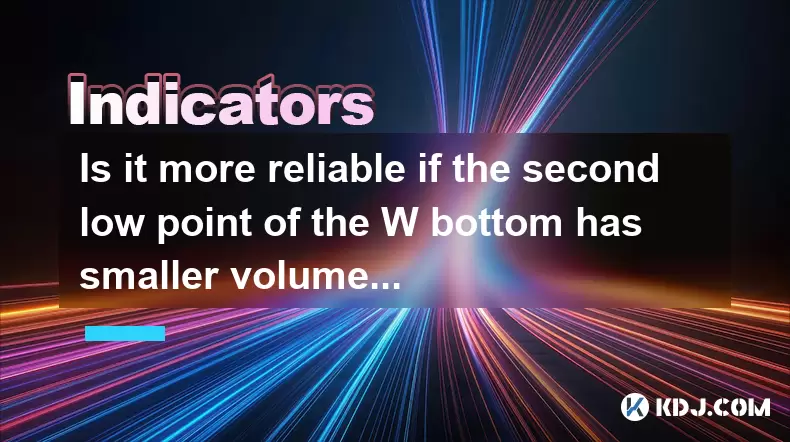
Is it more reliable if the second low point of the W bottom has smaller volume?
Jun 30,2025 at 04:42pm
Understanding the W Bottom Pattern in Cryptocurrency TradingIn technical analysis, the W bottom pattern is a reversal formation that signals a potential change from a downtrend to an uptrend. It is named for its shape — two distinct lows (the bottoms of the 'W') separated by a peak. This pattern is widely used in cryptocurrency trading due to the volati...
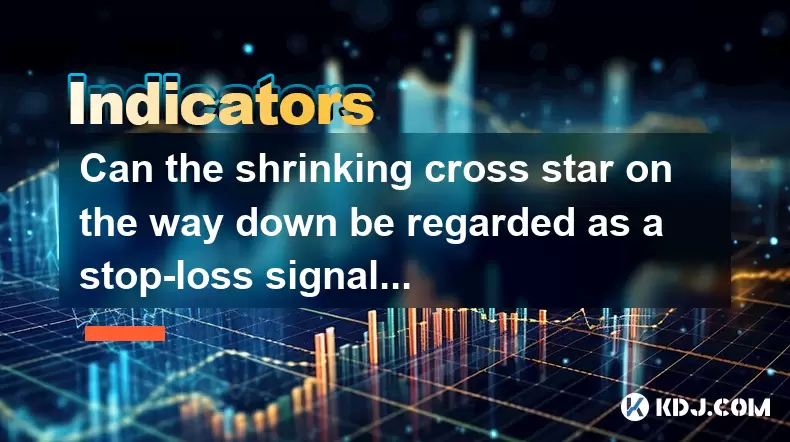
Can the shrinking cross star on the way down be regarded as a stop-loss signal?
Jun 30,2025 at 05:29pm
Understanding the Shrinking Cross Star Candlestick PatternThe shrinking cross star is a candlestick pattern that typically appears during a downtrend and may signal potential market indecision or a possible reversal. This pattern consists of a large bearish candle followed by a smaller-bodied candle, often resembling a doji or spinning top, indicating d...
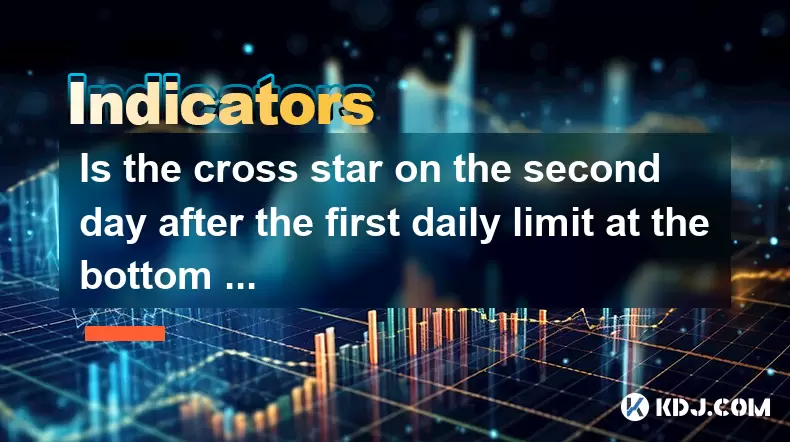
Is the cross star on the second day after the first daily limit at the bottom an aerial refueling?
Jun 30,2025 at 05:08pm
Understanding the Terminology: Cross Star and Daily LimitIn technical analysis within the cryptocurrency market, certain candlestick patterns are often interpreted as signals for potential trend reversances or continuations. One such pattern is the cross star, which typically refers to a candlestick with a small body and long upper and lower shadows, re...
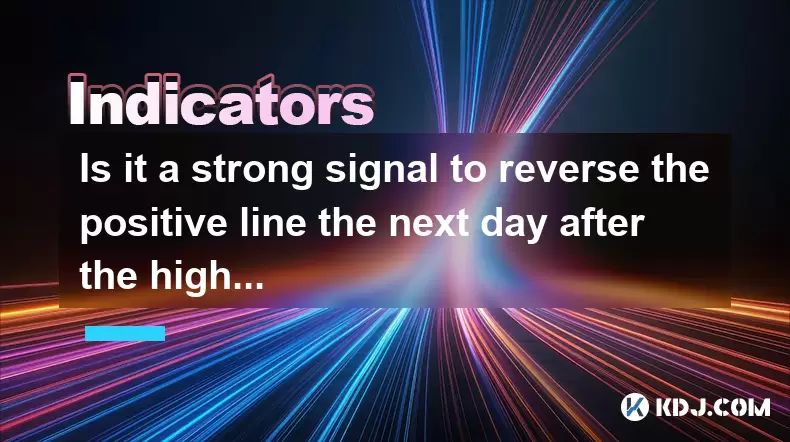
Is it a strong signal to reverse the positive line the next day after the high-level long upper shadow line?
Jun 30,2025 at 03:56pm
Understanding the High-Level Long Upper Shadow LineIn technical analysis, a high-level long upper shadow line refers to a candlestick pattern where the price opens at a certain level, rises significantly during the session, but then closes much lower than its high point. This results in a candle with a long upper wick or shadow, indicating that buyers p...

Is the wash-out of the continuous shrinking small negative lines over?
Jun 30,2025 at 12:21pm
Understanding the Concept of Wash-Out in Cryptocurrency MarketsIn cryptocurrency trading, a wash-out refers to a sharp price decline that forces weak-handed traders and investors to liquidate their positions. This often happens when a series of small negative candlesticks appear on the chart, indicating bearish sentiment without a significant breakout. ...
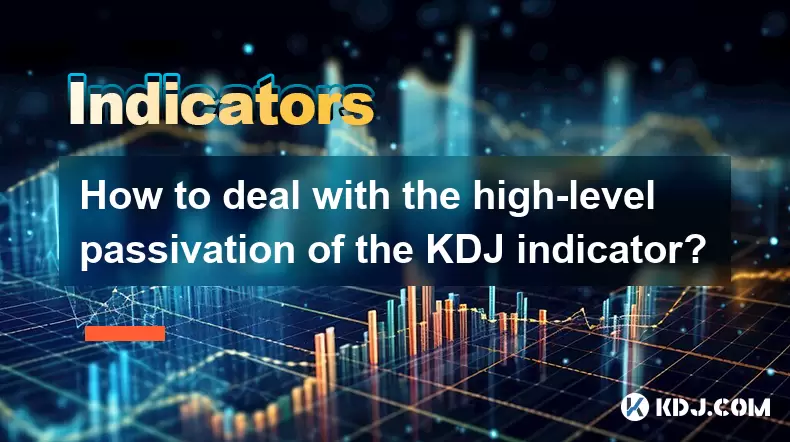
How to deal with the high-level passivation of the KDJ indicator?
Jun 30,2025 at 02:14pm
Understanding the KDJ Indicator and Its Role in Cryptocurrency TradingThe KDJ indicator, also known as the stochastic oscillator with J line modification, is a momentum-based technical analysis tool widely used in cryptocurrency trading. It consists of three lines: K, D, and J, which reflect overbought and oversold conditions. Traders often rely on it t...

Is it more reliable if the second low point of the W bottom has smaller volume?
Jun 30,2025 at 04:42pm
Understanding the W Bottom Pattern in Cryptocurrency TradingIn technical analysis, the W bottom pattern is a reversal formation that signals a potential change from a downtrend to an uptrend. It is named for its shape — two distinct lows (the bottoms of the 'W') separated by a peak. This pattern is widely used in cryptocurrency trading due to the volati...

Can the shrinking cross star on the way down be regarded as a stop-loss signal?
Jun 30,2025 at 05:29pm
Understanding the Shrinking Cross Star Candlestick PatternThe shrinking cross star is a candlestick pattern that typically appears during a downtrend and may signal potential market indecision or a possible reversal. This pattern consists of a large bearish candle followed by a smaller-bodied candle, often resembling a doji or spinning top, indicating d...

Is the cross star on the second day after the first daily limit at the bottom an aerial refueling?
Jun 30,2025 at 05:08pm
Understanding the Terminology: Cross Star and Daily LimitIn technical analysis within the cryptocurrency market, certain candlestick patterns are often interpreted as signals for potential trend reversances or continuations. One such pattern is the cross star, which typically refers to a candlestick with a small body and long upper and lower shadows, re...

Is it a strong signal to reverse the positive line the next day after the high-level long upper shadow line?
Jun 30,2025 at 03:56pm
Understanding the High-Level Long Upper Shadow LineIn technical analysis, a high-level long upper shadow line refers to a candlestick pattern where the price opens at a certain level, rises significantly during the session, but then closes much lower than its high point. This results in a candle with a long upper wick or shadow, indicating that buyers p...

Is the wash-out of the continuous shrinking small negative lines over?
Jun 30,2025 at 12:21pm
Understanding the Concept of Wash-Out in Cryptocurrency MarketsIn cryptocurrency trading, a wash-out refers to a sharp price decline that forces weak-handed traders and investors to liquidate their positions. This often happens when a series of small negative candlesticks appear on the chart, indicating bearish sentiment without a significant breakout. ...

How to deal with the high-level passivation of the KDJ indicator?
Jun 30,2025 at 02:14pm
Understanding the KDJ Indicator and Its Role in Cryptocurrency TradingThe KDJ indicator, also known as the stochastic oscillator with J line modification, is a momentum-based technical analysis tool widely used in cryptocurrency trading. It consists of three lines: K, D, and J, which reflect overbought and oversold conditions. Traders often rely on it t...
See all articles

























































































